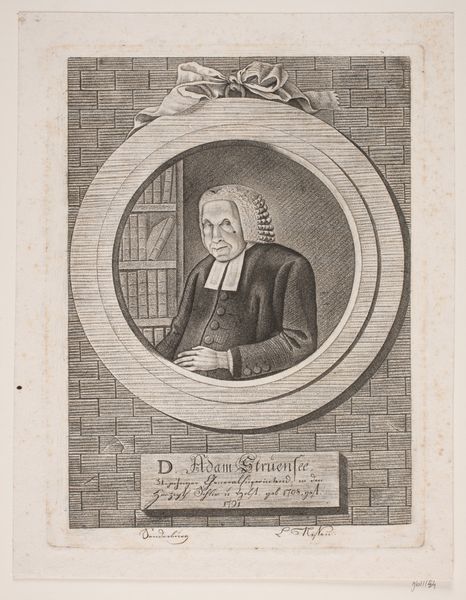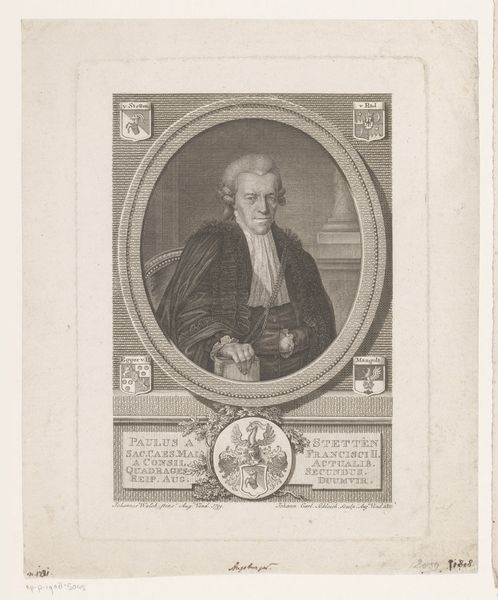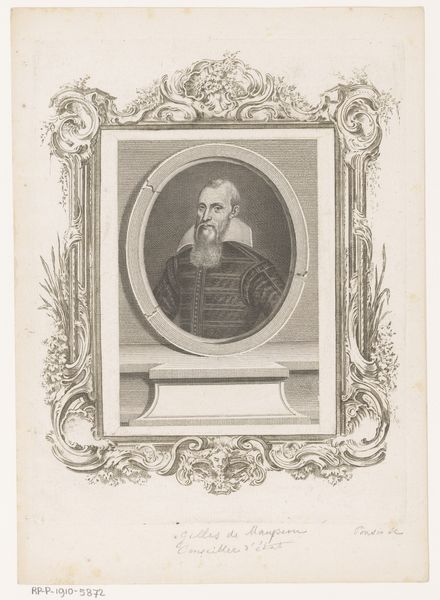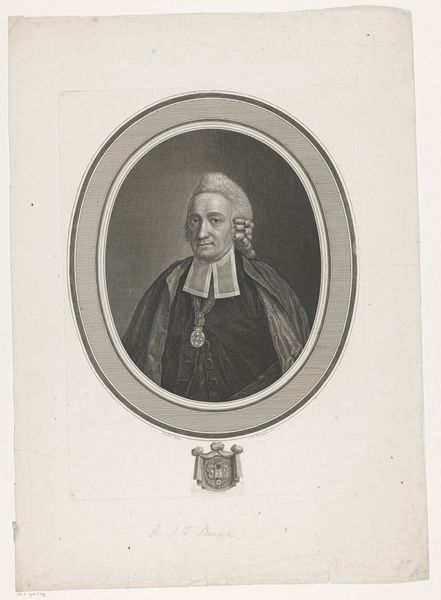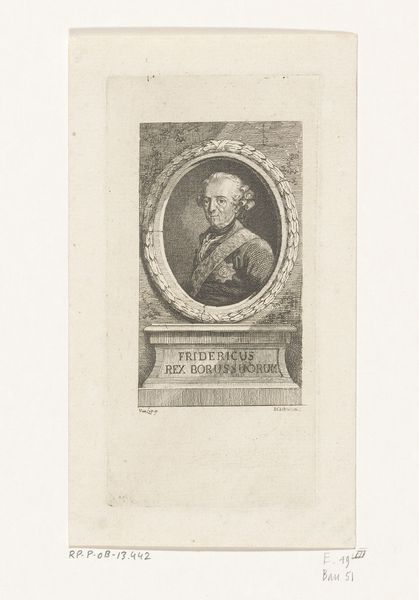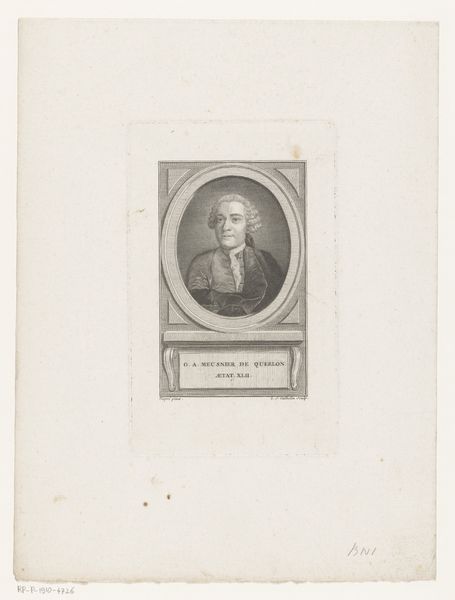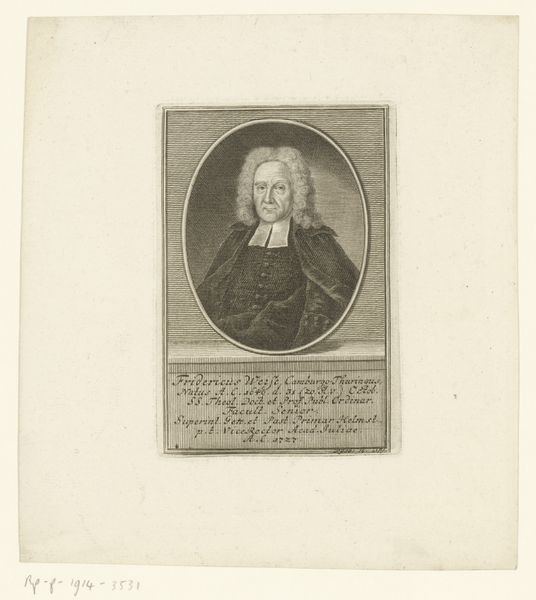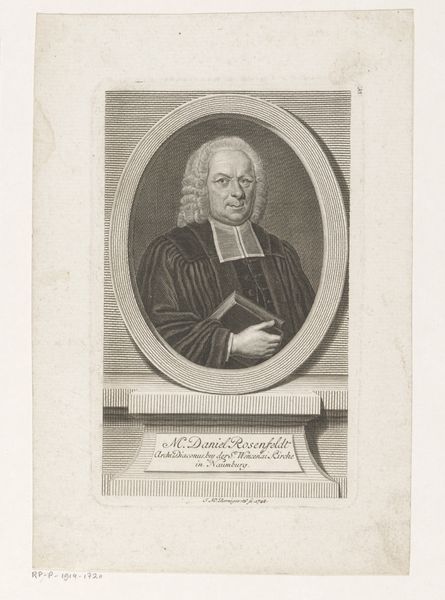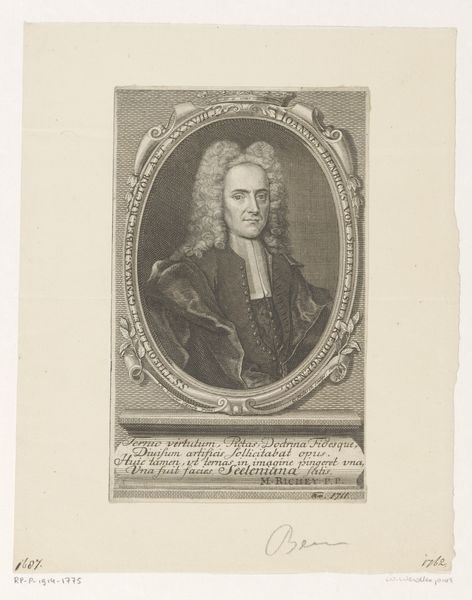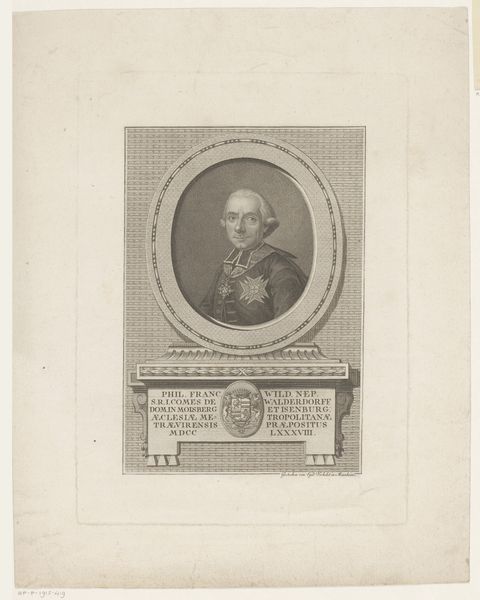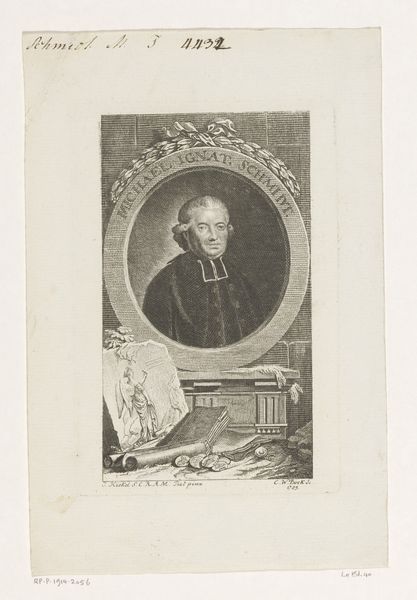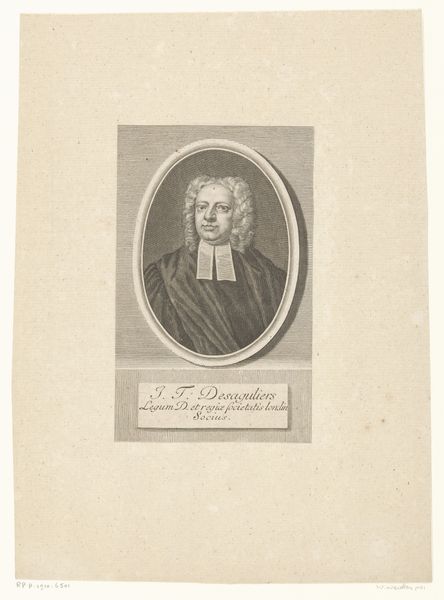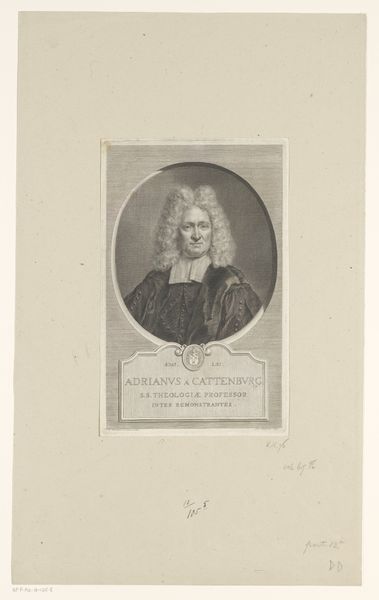
print, engraving
#
portrait
#
neoclacissism
# print
#
15_18th-century
#
engraving
Dimensions: height 167 mm, width 105 mm
Copyright: Rijks Museum: Open Domain
Curator: Today we're looking at Carl Christian Glassbach's 1779 engraving, "Portret van Johann August Hermes." Editor: My first impression is one of serenity. The subject's gaze is direct, yet not challenging. The tonal range in such a print is quite beautiful. Curator: Indeed. Glassbach's print comes during a period of significant social and intellectual ferment. Hermes, whose portrait this is, was a quite influential theologian. The late 18th century saw the rise of rationalist theology in Germany, and Hermes was a key figure within that movement. Prints like this circulated ideas, solidifying Hermes' position as a leader of thought. Editor: Notice how the composition directs the eye. The oval frame focuses our attention on Hermes' face, the light catching his high forehead. Then, our eyes wander down to the carefully rendered quill and open book, suggestive of both Hermes' intellectual activity and his accomplishments. Curator: It's worth considering the political implications too. Hermes' rationalist theology challenged orthodox religious thought and indirectly, certain aspects of the social hierarchy. By circulating his image so widely, it can be seen as giving visual presence to what some might have deemed the "risky" world of free and questioning thought. Editor: From a formal perspective, observe how Glassbach balances realism with idealism. There's a detailed attention to the individual, rendered through very thin lines that create form, but there is also something slightly idealized in this presentation. It's meant to communicate trustworthiness. Curator: Ultimately, portraits of prominent figures like Hermes reinforced their place in society. These prints served as visual testaments to individual achievement, reinforcing societal power dynamics of the period. Editor: An image both precise and symbolic. This artwork reveals, through the visual rhetoric of line and form, an era defined by a new understanding of science, theology, and rationalism.
Comments
No comments
Be the first to comment and join the conversation on the ultimate creative platform.

